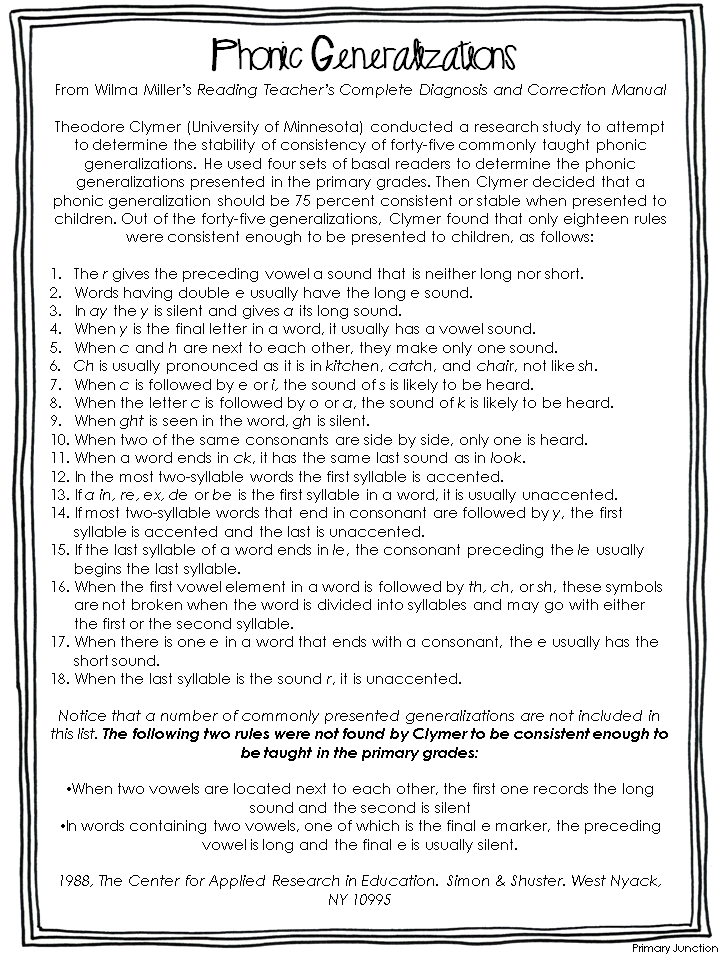Phonics Generalizations
Phonics Generalizations are phonics rules that are taught to emerging readers to help them learn letter combination sounds to increase reading and spelling ability. Theodore Clymer researched over 45 phonics generalizations and found that only 18 were proven to be true at least 75% of the time. This goes hand-in-hand with how difficult the English language can be because there are so many rules and what works in one situation, often doesn’t in another. Below are the 18 Phonics Generalizations proven to work at least 75% of the time:
Phonics Generalizations
- The r gives the preceding vowel a sound that is neither long nor short.
- Words having double e usually have the long e sound.
- In ay the y is silent and gives a its long sound.
- When y is the final letter in a word, it usually has a vowel sound.
- When c and h are next to each other, they make only one sound.
- Ch is usually pronounced as it is in kitchen, catch, and chair, not like sh.
- When c is followed by e or i, the sound of s is likely to be heard.
- When the letter c is followed by o or a, the sound of k is likely to be heard.
- When ght is seen in the word, gh is silent.
- When two of the same consonants are side by side, only one is heard.
- When a word ends in ck, it has the same last sound as in look.
- In the most two-syllable words the first syllable is accented.
- If a in, re, ex, de or be is the first syllable in a word, it is usually unaccented.
- If most two-syllable words that end in consonant are followed by y, the first syllable is accented and the last is unaccented.
- If the last syllable of a word ends in le, the consonant preceding the le usually begins the last syllable.
- When the first vowel element in a word is followed by th, ch, or sh, these symbols are not broken when the word is divided into syllables and may go with either the first or the second syllable.
- When there is one e in a word that ends with a consonant, the e usually has the short sound.
- When the last syllable is the sound r, it is unaccented.
Notice that a number of commonly presented generalizations are not included in this list. The following two rules were not found by Clymer to be consistent enough to be taught in the primary grades:
- When two vowels are located next to each other, the first one records the long sound and the second is silent
- In words containing two vowels, one of which is the final e marker, the preceding vowel is long and the final e is usually silent.
(Source – 1988, The Center for Applied Research in Education. Simon & Shuster. West Nyack, NY 10995)


